Stephanie Sinclair,
a Pulitzer Prize-winning photographer, is the founder and president of Too Young To Wed.
Their names are Khoshbakht, Saliha, Fawzia, Benazir, Farzana and Nazia — Afghan girls ages 6 to 10 who have been sold into marriage. Desperation forced their parents to thrust them into brutal adulthood. In Shahrak-e-Sabz, a settlement of makeshift mud-brick homes and tents for the displaced in Herat province that we visited last month, our researchers counted 118 girls who had been sold as child brides, and 116 families with girls waiting for buyers. This amounts to 40 percent of families surveyed, even though the Taliban decreed in late 2021 that women should not be considered “property” and must consent to marriage.
Conditions in the settlement are hellish. Shahrak-e-Sabz is set in a vast desert with no shade trees in sight; scant protection from sandstorms and harsh weather; no running water, electricity, heat or work; and only a trickle of aid from the outside world. Most families living here left behind decent lives to escape climate change and conflict. They subsist on stale bread and black tea; many are close to starving.
Across Afghanistan, child marriages have skyrocketed, and not only because of economic collapse. Families once hoped that their daughters, when educated, might find good work and contribute to the family income. Today, under the Taliban’s ever-increasing restrictions, school is prohibited for girls after the sixth grade, and work options for women are few. Sequestered at home, a girl becomes just another mouth to feed. But as a bride, she’s a valuable commodity. A $2,000 bride price is enough to feed a family for a year. For the girls, of course, this is a nightmare. In their new in-laws’ homes, they are saddled with housework and often subject to verbal, physical and sexual abuse — slavery under the guise of matrimony. It’s no wonder suicide and depression are rising among Afghan teenage girls.
To address the root causes of the child-bride phenomenon, my organization, Too Young to Wed, works to alleviate the hunger that stalks almost 90 percent of Afghans today. We provide parents with livelihood training so they can support their families rather than choose between starving or selling their children. In some cases, sensitive social workers can work with local authorities to annul marriages. Meanwhile, it is essential to educate community elders about the detrimental effects of child marriage, its harm to girls’ physical and emotional well-being and to the broader societal fabric. Girls under age 15 are five times more likely than women to die in childbirth, and their babies are often born premature.
In the midst of our fieldwork in Afghanistan, we worked with photographers to document the lives of several families who have faced the prospect of child marriage. Here are six of their stories.
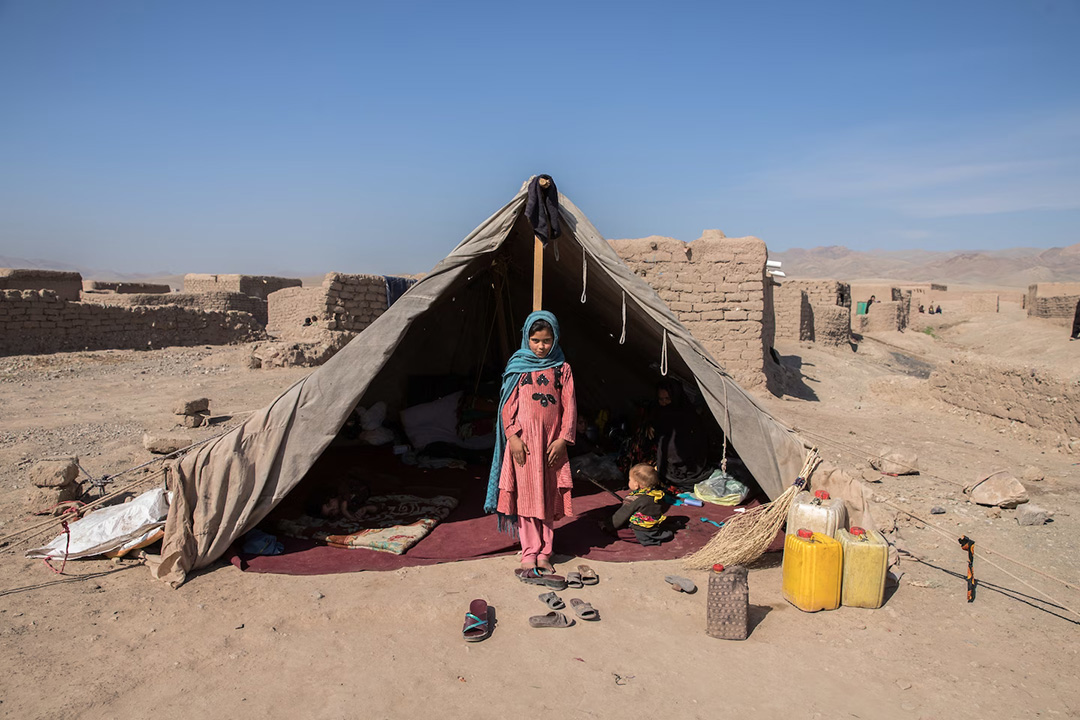
Photo credit: (Too Young to Wed)
Khoshbakht is one of five children living with their mother, Nazdana. Their father died a year ago, and Nazdana now works as a tailor by day and does embroidery at night. Her two daughters gather meager money by begging. Since the family’s house was destroyed in an October earthquake, they have been living in a tent. In two months, Khoshbakht is to join the family to which she was sold two years ago for 150,000 Afghanis (about $2,100). “I want to be with my mother,” she said. She also wants to stay in school with her friends. Nazdana has been offered money for her 8-year-old daughter, Razia, too. “In the future,” she fears, ‘I won’t have a choice.”
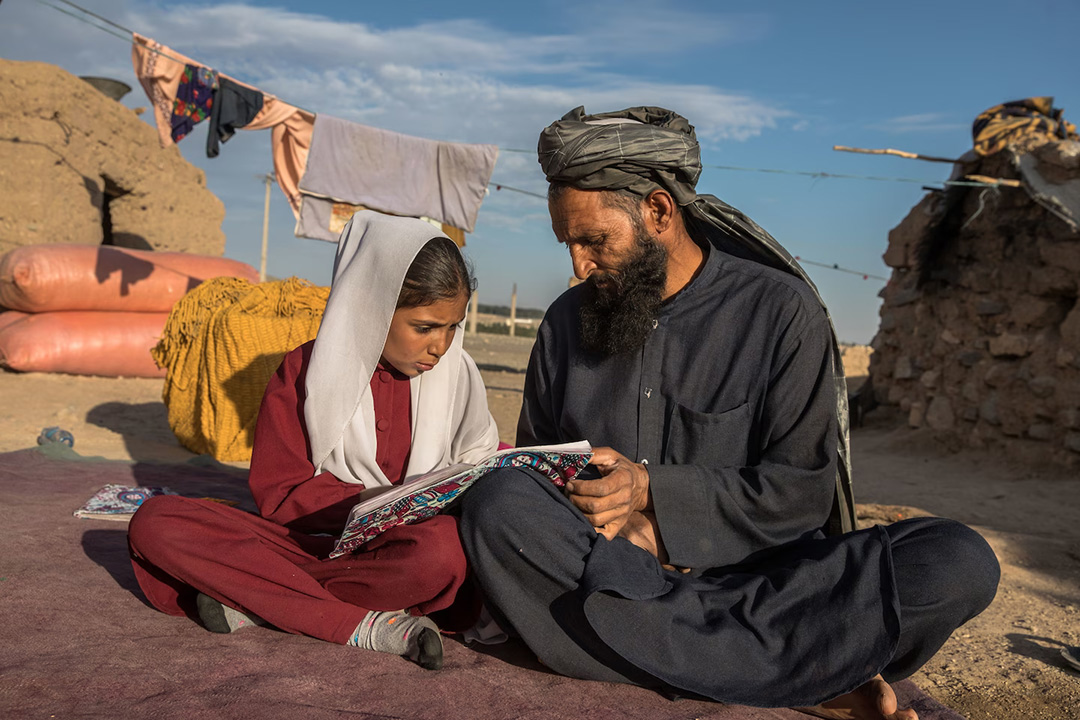
Photo credit: (Too Young to Wed)
Saliha was sold into marriage at age 7. “I sold my daughter due to poverty and hunger to save the life of the others,” said her father, Mohammad Khan. “I feel guilty but I had no other choice.” Too Young to Wed worked with the families and faith leaders to annul the marriage. Saliha, now 10 and enrolled in school, looks at her homework with her father, who is delighted by her education. “When we go in the city,” he said, “my daughter tells me: here, it is written ‘clinic.’ Here it is written this name or that name. Me? I can’t read these things. I will not marry my daughter before she finishes her studies. It’s too important.”
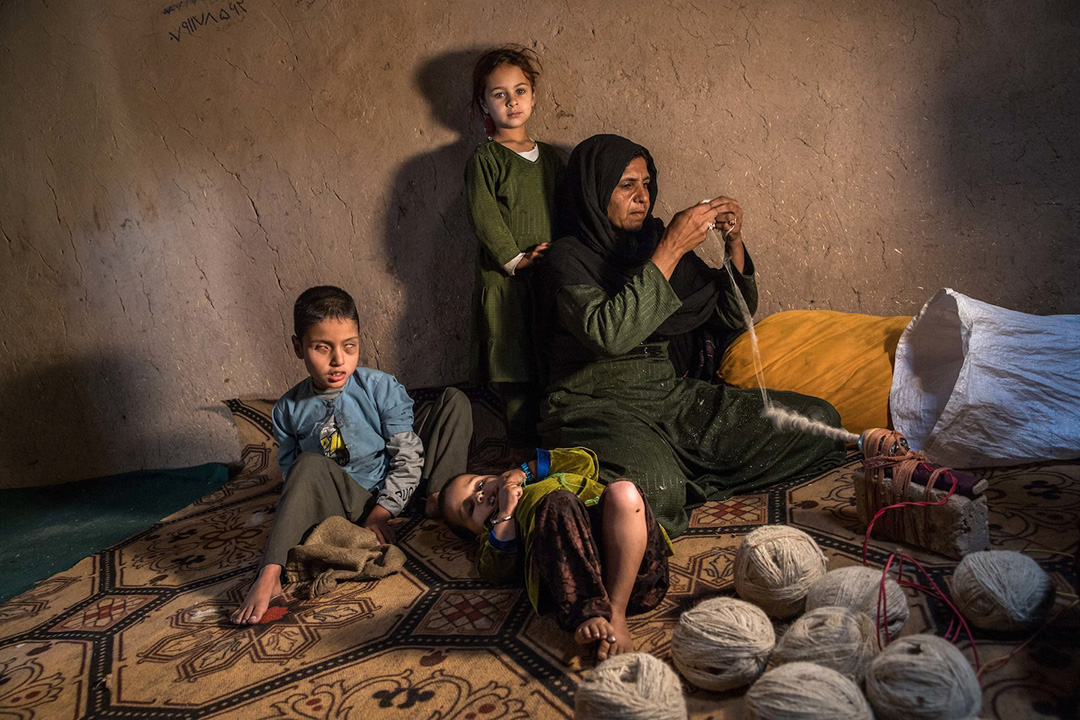
Photo credit: (Too Young to Wed)
Fawzia, standing here with Ghulam Hazrat, 8; Amina, 5; and her mother, Shirin Gul, loves playing with her rabbit and wants to go to school like other girls. But Shirin Gul says she will have to sell Fawzia into marriage. The family has too little money, and she sees no other option. Three of her eight children are disabled, and she earns just 25 Afghanis (about 36 cents) a day spinning wool.
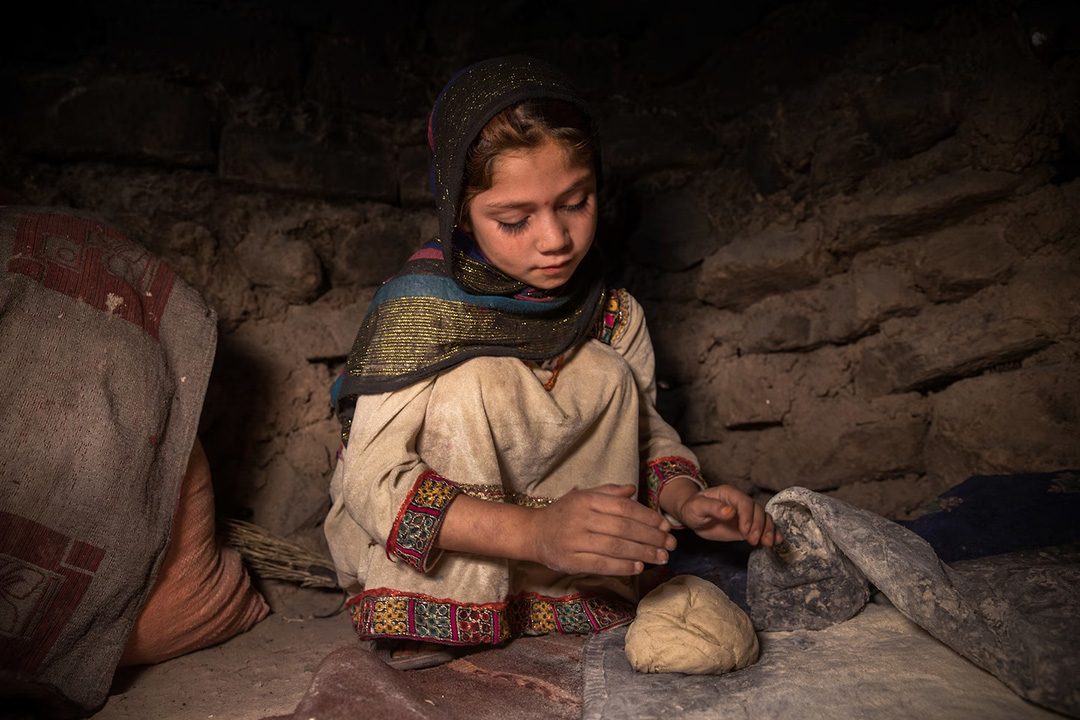
Photo credit: (Too Young to Wed)
Benazir, seen here making bread, was sold into marriage at age 7, when her father, Murad Khan, found he could no longer feed his eight children. Too Young to Wed negotiated with the families and faith leaders to annul the marriage, and helped Khan with the start-up capital needed to open a shop and become self-sufficient. Benazir is now enrolled in robotics school, and one of her sisters, Khomari, has completed Too Young to Wed’s sewing program. Khan says, “Even if someone put a knife on my neck, I won’t marry off my daughter.”
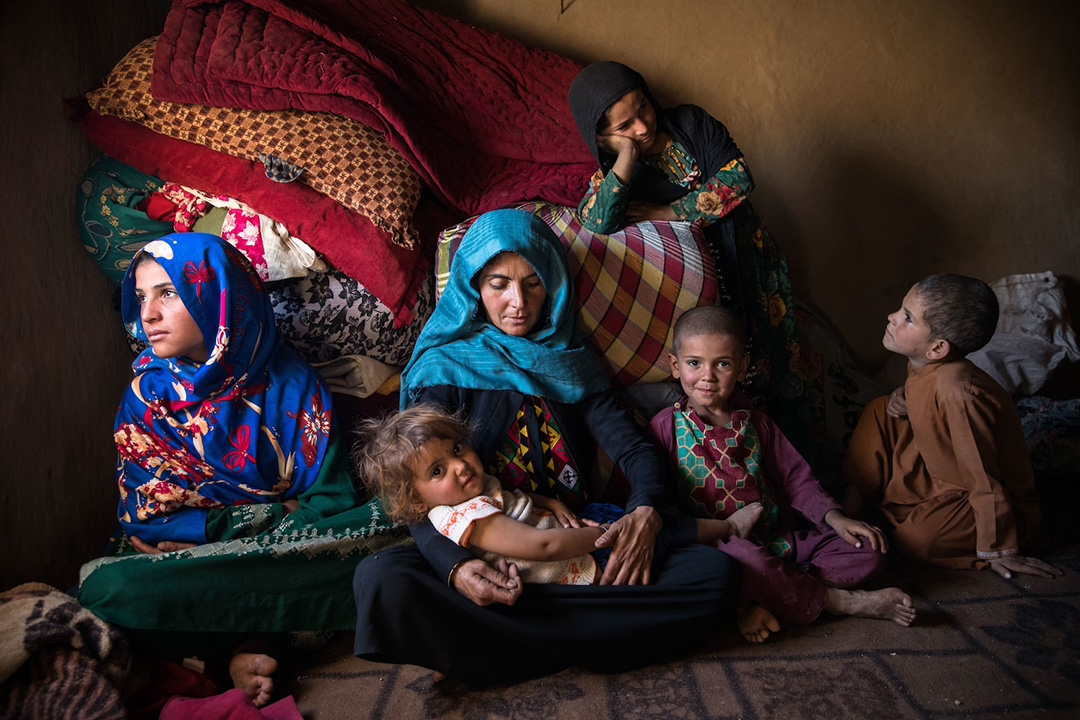
Photo credit: (Too Young to Wed)
Farzana’s mother, Mariam, has seven children, ranging in age from 1 to 15. Farzana is at the top of this photo, with her mother and four of her siblings: Halima, 13; Fatima, 2; Gul Ahmad, 5; and Yunus, 7. After Mariam’s husband died in a car accident last year, she had to borrow money to survive. As her debts increased, she was forced to sell Farzana for 300,000 Afghanis (about $4,300). The buyer insists he’s entitled to take Farzana now because there’s no man in Mariam’s house, but Mariam is fighting through the legal system to keep Farzana until she turns 18.
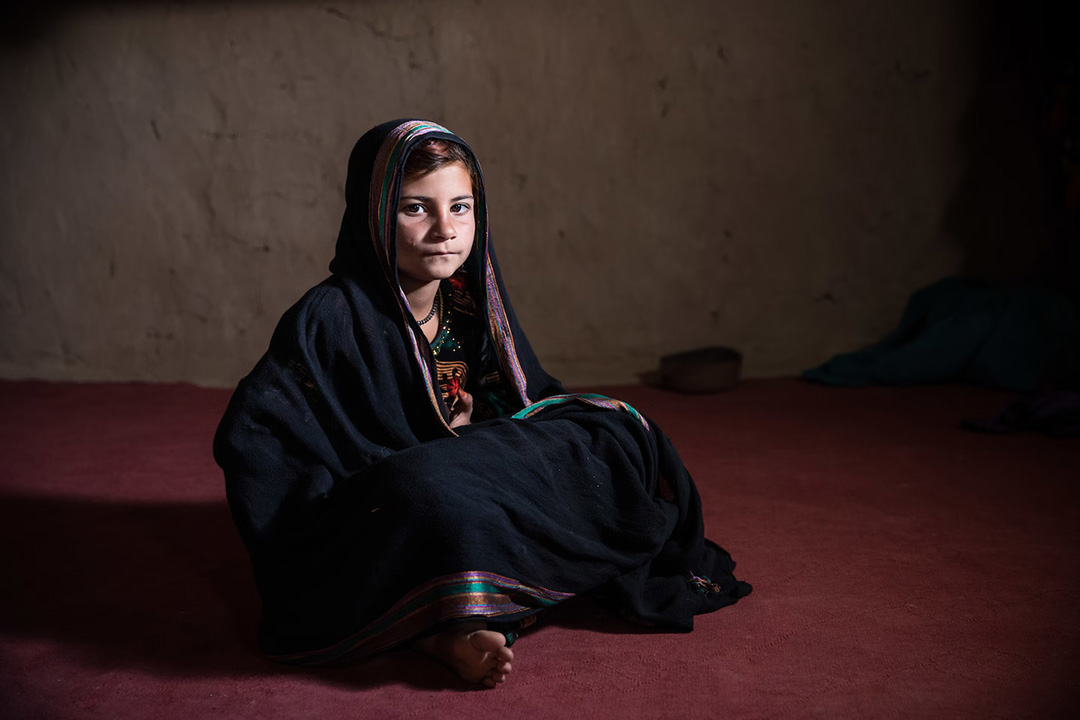
Photo credit: (Too Young to Wed)
Nazia was sold one year ago instead of her 12-year-old sister Pashtana, who insisted on staying in school. Their mother, Nazgul, and her husband have struggled to feed their six children and decided they had no other choice but to sell one of their daughters to a relative’s family for 200,000 Afghanis (about $2,800). At the time, Nazia had no idea what marriage would mean, so she didn’t protest. Now she knows, and the boy’s family wants to take her already. Nazia said she wants to play and be with her family. “I like school. I like learning the alphabet. The whole class is friends with me.” Nazgul regrets her decision but said, “We didn’t have anything, not even a mattress. I was forced to sell my daughter.” She is trying to persuade the boy’s family to let Nazia stay home for three more years.



